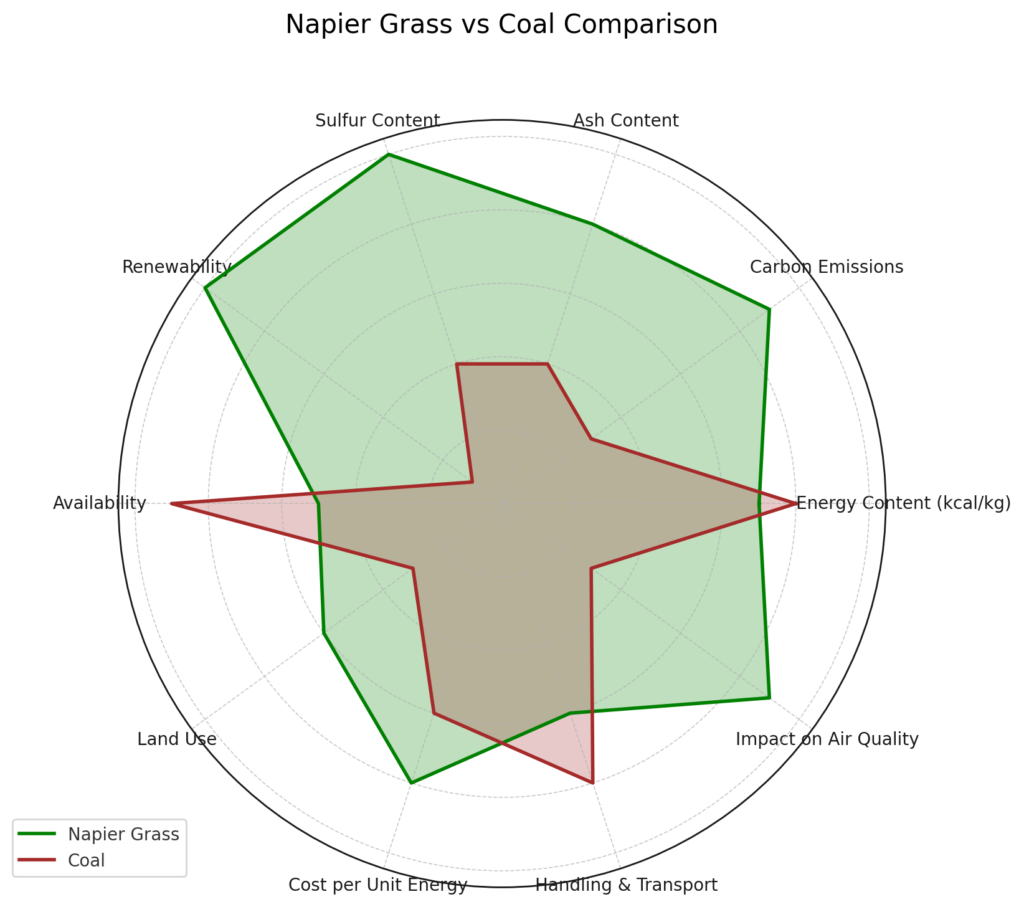
Torrefaction reduces volatile matter (VM), improving combustion characteristics and energy density. Biomass with higher VM (>60%) is more suitable for torrefaction because it allows greater mass loss, improving fixed carbon content and making the fuel more energy-dense.

Biomass with low VM (<40%) may not benefit as much from torrefaction since the reduction in volatiles is minimal.
| 🌿 Biomass Type | 🔥 Volatile Matter (%) | ⚡ Best for Torrefaction? | 📌 Why? |
| Napier Grass | 65 – 75% | ✅ Yes | High yield, easy torrefaction, good energy balance |
| Rice Husk | 50 – 60% | ✅ Yes | Moderate VM, low ash fusion temperature, stable combustion |
| Wood Chips (Hardwood) | 70 – 75% | ✅ Yes | High lignin, retains structure post-torrefaction |
| Pine Wood | 65 – 70% | ✅ Yes | High calorific value post-torrefaction |
| Palm Kernel Shell (PKS) | 55 – 65% | ✅ Yes | High fixed carbon, strong demand for torrefied PKS |
| Bamboo | 60 – 70% | ✅ Yes | Fast-growing, good torrefaction response |
| Wheat Straw | 70 – 75% | ✅ Yes | High VM, easily torrefied, but higher ash content |
| Corn Stover | 65 – 72% | ✅ Yes | High volatile content, good for bioenergy |
| Coconut Shell | 40 – 50% | ❌ Not Ideal | Already has high fixed carbon, minimal torrefaction benefit |
| Charcoal Dust | 10 – 20% | ❌ No | Already low VM, torrefaction unnecessary |
🔥 More mass loss → Higher fixed carbon content
📦 Better grindability → Easy to process into pellets
⚡ Higher energy density → Improved GCV (4,800 – 5,500 kcal/kg)
💧 Reduced moisture sensitivity → More stable storage & transport
🔹 Conclusion: Biomass with high volatile matter (60-75%) is the best choice for torrefied pellets. Napier Grass, Pine Wood, Rice Husk, and Palm Kernel Shells are top contenders due to their high availability, energy potential, and improved combustion efficiency after torrefaction.
📍 Servoday Plants & Equipments Limited
📞 +91 9427210483 | +91 9427210484
📧 [email protected]
🌐 www.PelletIndia.com
👤 Contact Person: Sanjay Masuria
📲 WhatsApp: +91 9427210483